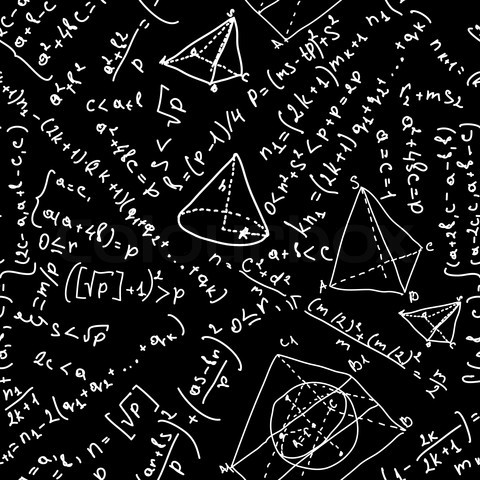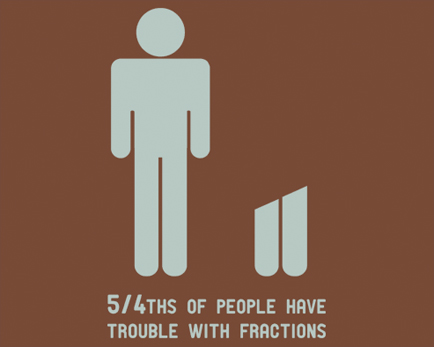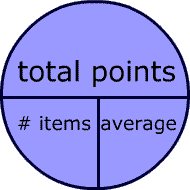 Today we are going to talk about simultaneous equations on the SAT. Traditionally, students take what I call the isolate and dominate approach to simultaneous equations. That is, instead of seeing how the equations relate to each other in an attempt to find the right answer, students figure out what one of the values equals, plugs that new equation into the prompt, solves for x or y and then re-plugs in that number. That is a lot of work! That Isolate and dominate approach absolutely works on the SAT, in algebra 2, and on your simultaneous equation problems. But there HAS to be a better way. This is the SAT, after all. The SAT Blue Book talks a lot of smack about this not being a logic test and you not needing test preparation. “Just paying attention to your teachers will be enough,” they say. As if all high school curricula are the same. As if all high school teachers are equally adequate and no students receive private tutoring for high school subjects. Richard Koch wrote a great book called The 80/20 Principle. In it, he says that you should never play a game where you do not create the rules. Unfortunately, you have to take the SAT to get into a great university. Because you cannot create the rules, you need to do everything in your power to tip the game in your favor. That’s why using what we learn in high school, isolate and dominate simultaneous equations is not really going to work on this test. Instead, we need to think of a smarter way. In todays...
Today we are going to talk about simultaneous equations on the SAT. Traditionally, students take what I call the isolate and dominate approach to simultaneous equations. That is, instead of seeing how the equations relate to each other in an attempt to find the right answer, students figure out what one of the values equals, plugs that new equation into the prompt, solves for x or y and then re-plugs in that number. That is a lot of work! That Isolate and dominate approach absolutely works on the SAT, in algebra 2, and on your simultaneous equation problems. But there HAS to be a better way. This is the SAT, after all. The SAT Blue Book talks a lot of smack about this not being a logic test and you not needing test preparation. “Just paying attention to your teachers will be enough,” they say. As if all high school curricula are the same. As if all high school teachers are equally adequate and no students receive private tutoring for high school subjects. Richard Koch wrote a great book called The 80/20 Principle. In it, he says that you should never play a game where you do not create the rules. Unfortunately, you have to take the SAT to get into a great university. Because you cannot create the rules, you need to do everything in your power to tip the game in your favor. That’s why using what we learn in high school, isolate and dominate simultaneous equations is not really going to work on this test. Instead, we need to think of a smarter way. In todays...
 Thank you so much for checking out this ratio and proportion lesson. I want to make today’s post short and sweet. So short, and sweet, that I’ll just jump straight to the video. Ratios and Proportions Ratios and Proportions are deceptively easy. They just LOOK really hard on the test. If this video cleared up some of your misunderstandings, please let me know in the comments below. I really enjoyed making this lesson. I look forward to hearing from you...
Thank you so much for checking out this ratio and proportion lesson. I want to make today’s post short and sweet. So short, and sweet, that I’ll just jump straight to the video. Ratios and Proportions Ratios and Proportions are deceptively easy. They just LOOK really hard on the test. If this video cleared up some of your misunderstandings, please let me know in the comments below. I really enjoyed making this lesson. I look forward to hearing from you...
 Hi! I’m really glad you are here. I’m super into coffee at the moment, so I will try to make this as quick as possible so I can go jump on a bed or punch a shark. (Note: It is my lifelong dream to punch a shark in the snout.) When I was in high school, functions were so totally easy. I mean, you get something funky like: f(x) = 2x + 2 and then you are asked for f(4) or something. When I was younger, all I knew to do was replace the x in the first statement with a 4, and viola! Functions on the SAT are pretty much just like my experience in high school. But, because the ETS gets paid to make you hate yourself, it has to make those f(u)unctions as complicated as possible. But how can you make a function complicated if it kind of is only plug-and-play? Beating Functions In math and in my other passion, computer science (or comp-sci for my magically nerdy brothers and sisters), a function is a “correspondence that associates each input with exactly one output.” What-the-huh? It means that if you put in one value, 4, you’ll get back only one value, 10. In the math we are rockin’ on the SAT, these relate to coordinate geometry. The f(x) refers to the x in our (x,y). While the = 4x + 3 refers to the y in our (x,y). So the idea is to plug in some numbers for your x, figure out what you get for your y, put in on those coordinate plane, recognize your...
Hi! I’m really glad you are here. I’m super into coffee at the moment, so I will try to make this as quick as possible so I can go jump on a bed or punch a shark. (Note: It is my lifelong dream to punch a shark in the snout.) When I was in high school, functions were so totally easy. I mean, you get something funky like: f(x) = 2x + 2 and then you are asked for f(4) or something. When I was younger, all I knew to do was replace the x in the first statement with a 4, and viola! Functions on the SAT are pretty much just like my experience in high school. But, because the ETS gets paid to make you hate yourself, it has to make those f(u)unctions as complicated as possible. But how can you make a function complicated if it kind of is only plug-and-play? Beating Functions In math and in my other passion, computer science (or comp-sci for my magically nerdy brothers and sisters), a function is a “correspondence that associates each input with exactly one output.” What-the-huh? It means that if you put in one value, 4, you’ll get back only one value, 10. In the math we are rockin’ on the SAT, these relate to coordinate geometry. The f(x) refers to the x in our (x,y). While the = 4x + 3 refers to the y in our (x,y). So the idea is to plug in some numbers for your x, figure out what you get for your y, put in on those coordinate plane, recognize your...
 SAT questions come in all kinds of wonderfully complicated shapes and sizes. Some problems require you to simply solve for x, find an area of a circle, or factor a couple of numbers and master those rules of divisibility. Today, I want to review another concept that tends to creep up on the SAT often: Mean, median, and mode Mean, median, and mode are basic concepts that you should have learned in grade school. But, the very fact that you learned how to find the mean so long ago means that in order to properly test your SAT ability, the test writers have to create complicated question-types. While teaching my students, taking this test, and reviewing the official guide, I have discovered a limited number of ways the SAT can test average. Those ways are: Hidden variable Change in value Adding new information Partial average Incomplete sum Beat the Mean As you can see, there are a lot of ways the test writers attempt to confound you. In today’s video lesson, I walk through what mean, median, and mode really mean and then give you a unique strategy that I use in my private classes! After the break I talk about a pretty important SAT strategy and my progressive learning system. An Updated Progressive Learning System I talk a lot about testing strategy on this website. There is a very obvious reason for that: without a strategy, techniques, and pacing skills, your knowledge won’t be enough. This free blog series is intended to give you all the knowledge you need to do really well on the SAT. Really well....
SAT questions come in all kinds of wonderfully complicated shapes and sizes. Some problems require you to simply solve for x, find an area of a circle, or factor a couple of numbers and master those rules of divisibility. Today, I want to review another concept that tends to creep up on the SAT often: Mean, median, and mode Mean, median, and mode are basic concepts that you should have learned in grade school. But, the very fact that you learned how to find the mean so long ago means that in order to properly test your SAT ability, the test writers have to create complicated question-types. While teaching my students, taking this test, and reviewing the official guide, I have discovered a limited number of ways the SAT can test average. Those ways are: Hidden variable Change in value Adding new information Partial average Incomplete sum Beat the Mean As you can see, there are a lot of ways the test writers attempt to confound you. In today’s video lesson, I walk through what mean, median, and mode really mean and then give you a unique strategy that I use in my private classes! After the break I talk about a pretty important SAT strategy and my progressive learning system. An Updated Progressive Learning System I talk a lot about testing strategy on this website. There is a very obvious reason for that: without a strategy, techniques, and pacing skills, your knowledge won’t be enough. This free blog series is intended to give you all the knowledge you need to do really well on the SAT. Really well....
 Solving for X is pretty much an SAT establishment. If you cannot quickly and without error find X, your chances at a killer SAT score are totally not awesome. Just imagine getting the following fairly simple question: 3x – 7 = 2 If you do not know that x = 3, then you are in the right place. If you are thinking to yourself, “Goodness, Craig, why are you wasting my time with that!”, good for you! Remember, these introductory SAT posts are ‘SAT Math Basics‘. We are rocking through the basics before we hit up some advanced math. The purpose of these posts is not to be an exhaustive SAT manual. That would be counter-productive. This guide is here to be an evergreen lesson for all future SAT students. And that works! Inequalities and Find X Solving for X is not the only tricky beast I’m breaking down in this video. I also show you how the very simple process of solving for x can be used to do more complicated problems involved inequalities. Imagine have the following question: 46 < (2x + 3) < 12 After you watch the video, you’ll learn that the process for rocking this question in the same process (more or less) that you used to totally dominate the previous question. This is all true because the SAT is not going to kill you, it’s not going to stress you out, and it’s not going to dominate your ability to go to an awesome school. What are you waiting for? Go solve for x and rock your inequalities: The Final Word SAT Math...
Solving for X is pretty much an SAT establishment. If you cannot quickly and without error find X, your chances at a killer SAT score are totally not awesome. Just imagine getting the following fairly simple question: 3x – 7 = 2 If you do not know that x = 3, then you are in the right place. If you are thinking to yourself, “Goodness, Craig, why are you wasting my time with that!”, good for you! Remember, these introductory SAT posts are ‘SAT Math Basics‘. We are rocking through the basics before we hit up some advanced math. The purpose of these posts is not to be an exhaustive SAT manual. That would be counter-productive. This guide is here to be an evergreen lesson for all future SAT students. And that works! Inequalities and Find X Solving for X is not the only tricky beast I’m breaking down in this video. I also show you how the very simple process of solving for x can be used to do more complicated problems involved inequalities. Imagine have the following question: 46 < (2x + 3) < 12 After you watch the video, you’ll learn that the process for rocking this question in the same process (more or less) that you used to totally dominate the previous question. This is all true because the SAT is not going to kill you, it’s not going to stress you out, and it’s not going to dominate your ability to go to an awesome school. What are you waiting for? Go solve for x and rock your inequalities: The Final Word SAT Math...
 In my last post I talked about some of the very basic SAT math concepts. Today, I want to do the same thing, but make the topic a bit more complicated. Today, we are going to break through the rules of divisibility, percents, fractions, and percent change. Students who cannot quickly convert decimals into fractions waste precious time on simple things like long division and calculation. The SAT is a timed test. You will need to be as effective and efficient as possible throughout the entire experience. If you don’t understand, there are books and tutors that you can use. It is with that understanding that we move to our lessons. The Rules of Divisibility The SAT test writes assume you know what makes a number divisible by another number. Briefly, a number is divisible by another number if you are able to divide it and get an integer. And integer is a whole number (ie. 1, 2, 10, 50). So, if you divide 50 by 2, you will get 25. That means that 50 is divisible by 2, because when you divide 50 by 2, you get an integer. Understanding the rules of divisibility naturally requires you to understand remainder. You’ll absolutely get the remainder problems correct after watching this lesson. In this video I break down how you can quickly and easily find the rules of divisibility: In case you want a quick cheat sheet, I actually put together a PDF magical cheat sheet. Cool, huh? Download Now Fractions, Percents, and Percent Change on the SAT The SAT assumes you have knowledge of fractions and fraction conversion. And...
In my last post I talked about some of the very basic SAT math concepts. Today, I want to do the same thing, but make the topic a bit more complicated. Today, we are going to break through the rules of divisibility, percents, fractions, and percent change. Students who cannot quickly convert decimals into fractions waste precious time on simple things like long division and calculation. The SAT is a timed test. You will need to be as effective and efficient as possible throughout the entire experience. If you don’t understand, there are books and tutors that you can use. It is with that understanding that we move to our lessons. The Rules of Divisibility The SAT test writes assume you know what makes a number divisible by another number. Briefly, a number is divisible by another number if you are able to divide it and get an integer. And integer is a whole number (ie. 1, 2, 10, 50). So, if you divide 50 by 2, you will get 25. That means that 50 is divisible by 2, because when you divide 50 by 2, you get an integer. Understanding the rules of divisibility naturally requires you to understand remainder. You’ll absolutely get the remainder problems correct after watching this lesson. In this video I break down how you can quickly and easily find the rules of divisibility: In case you want a quick cheat sheet, I actually put together a PDF magical cheat sheet. Cool, huh? Download Now Fractions, Percents, and Percent Change on the SAT The SAT assumes you have knowledge of fractions and fraction conversion. And...
 There are a finite number of concepts covered on the SAT. The College Board quote claiming that the only prep you should do for the SAT is to take rigorous high school classes is not without merit: the idea is to test what you should already know so if you do well in high school, the theory is that you will do well on the SAT. Now, there are hundreds of test prep companies and math tutors that would beg to differ, but let’s simply accept their reasoning for the time being. Were you to not study, you could do very well on the SAT with rigorous course work. That is a fact. With that said, the SAT is NOT simply a math test. Despite what college board wants you to think, the SAT is a “how do you interpret and understanding this question” test. It’s a reading comprehension test that uses symbols, grammar, vocabulary, and math to test that comprehension. And the SAT makes several serious assumptions about you. The SAT Math Assumptions The SAT assumes you can add fractions, find remainders, manipulate equations, and factor. In todays lesson, I want to address a few of those “SAT Assumptions” because, frankly, you may have missed some of this. In addition, a lot of what you were taught (like how absolute values are simply “always positive”) is functional but not necessarily correct. Units on the SAT I have a video for each lesson except for this one. Units are basic. Too basic for a video. But important none-the-less. Let’s recall this concept with the number: 482. As you should...
There are a finite number of concepts covered on the SAT. The College Board quote claiming that the only prep you should do for the SAT is to take rigorous high school classes is not without merit: the idea is to test what you should already know so if you do well in high school, the theory is that you will do well on the SAT. Now, there are hundreds of test prep companies and math tutors that would beg to differ, but let’s simply accept their reasoning for the time being. Were you to not study, you could do very well on the SAT with rigorous course work. That is a fact. With that said, the SAT is NOT simply a math test. Despite what college board wants you to think, the SAT is a “how do you interpret and understanding this question” test. It’s a reading comprehension test that uses symbols, grammar, vocabulary, and math to test that comprehension. And the SAT makes several serious assumptions about you. The SAT Math Assumptions The SAT assumes you can add fractions, find remainders, manipulate equations, and factor. In todays lesson, I want to address a few of those “SAT Assumptions” because, frankly, you may have missed some of this. In addition, a lot of what you were taught (like how absolute values are simply “always positive”) is functional but not necessarily correct. Units on the SAT I have a video for each lesson except for this one. Units are basic. Too basic for a video. But important none-the-less. Let’s recall this concept with the number: 482. As you should...
 There absolutely must be a better way to do fractions than the way we were taught. Finding the lowest common denominator is annoying, wastes time, and is pretty much impractical. Rarely will the SAT require you to add or subtract fractions, but when it does, it would benefit you to break it down quickly. In today’s video, I very quickly show you how to add fractions using the Bow-Tie Method. After the break, I’ll talk briefly about a unique SAT math mindset. Enjoy! Thinking About Fractions I spend a lot of time thinking about math (fractions and other math, of course). I do math in my mind, and I try to think of ways to explain the math I do in my mind. It sounds crazy, but it’s a cool skill to have. It means I can absolutely help you think about math. And that’s really what I plan to do today. When you work on the SAT, you really should focus on identifying wrong answers. The reason you should do this is twofold: (1) If you know why an answer cannot be right, then you have figured out how the SAT tries to distract you, and (2) Reviewing mistake you may make and mistakes you have made is the best way to avoid that mistake in the future. In my SAT study plan I noted how important it was to check all the wrong answers. This is a theme I will harp on constantly. Please understand how important it really is. What else would you like to learn? If you have any specific math questions, feel free to...
There absolutely must be a better way to do fractions than the way we were taught. Finding the lowest common denominator is annoying, wastes time, and is pretty much impractical. Rarely will the SAT require you to add or subtract fractions, but when it does, it would benefit you to break it down quickly. In today’s video, I very quickly show you how to add fractions using the Bow-Tie Method. After the break, I’ll talk briefly about a unique SAT math mindset. Enjoy! Thinking About Fractions I spend a lot of time thinking about math (fractions and other math, of course). I do math in my mind, and I try to think of ways to explain the math I do in my mind. It sounds crazy, but it’s a cool skill to have. It means I can absolutely help you think about math. And that’s really what I plan to do today. When you work on the SAT, you really should focus on identifying wrong answers. The reason you should do this is twofold: (1) If you know why an answer cannot be right, then you have figured out how the SAT tries to distract you, and (2) Reviewing mistake you may make and mistakes you have made is the best way to avoid that mistake in the future. In my SAT study plan I noted how important it was to check all the wrong answers. This is a theme I will harp on constantly. Please understand how important it really is. What else would you like to learn? If you have any specific math questions, feel free to...
 What’s more likely, getting heads three times in a row on a coin toss or rolling snake eyes in dice? (Snake eyes is two 1’s . . .) What’s more likely, getting a girlfriend this week AND passing your math test or getting a girlfriend this week OR passing your math test? Probability can be a *&^%$. Seriously. And that’s the point of today’s lesson. I will very briefly break down probability on the SAT. After the break, I will talk about this blog, a neat probability story, and other adventures. Probability does not have to be hard A common issue students have is not knowing WHERE to put WHAT. Often times, the denominator in a probability problem feels impossible to find out. But that really is the SAT pulling a fun mind game on you. If I say, there are five people sitting at a table (a, b, c, d, e) and I want to know the probability of C and D sitting next to each other, you start to freak out. And freak out you should. But think about it, what is the denominator? What is the total number of ways those five fools can sit together? It’s 120!! But how did I get that? Easy, you don’t need some complicated formula, it’s just 5! … 5 * 4 * 3 * 2 * 1 There is this neat counting problem I ask during my course, it goes something like this: If P is the unique combination of letters possible with the five letters of VIRGO and Q is the unique combination of letters possible with FOUR...
What’s more likely, getting heads three times in a row on a coin toss or rolling snake eyes in dice? (Snake eyes is two 1’s . . .) What’s more likely, getting a girlfriend this week AND passing your math test or getting a girlfriend this week OR passing your math test? Probability can be a *&^%$. Seriously. And that’s the point of today’s lesson. I will very briefly break down probability on the SAT. After the break, I will talk about this blog, a neat probability story, and other adventures. Probability does not have to be hard A common issue students have is not knowing WHERE to put WHAT. Often times, the denominator in a probability problem feels impossible to find out. But that really is the SAT pulling a fun mind game on you. If I say, there are five people sitting at a table (a, b, c, d, e) and I want to know the probability of C and D sitting next to each other, you start to freak out. And freak out you should. But think about it, what is the denominator? What is the total number of ways those five fools can sit together? It’s 120!! But how did I get that? Easy, you don’t need some complicated formula, it’s just 5! … 5 * 4 * 3 * 2 * 1 There is this neat counting problem I ask during my course, it goes something like this: If P is the unique combination of letters possible with the five letters of VIRGO and Q is the unique combination of letters possible with FOUR...
 Average questions for the SAT come in many different varieties. I have noticed the SAT focusing on 4 main types of average (mean) question: missing value, variable, extra value, and game changers. You should know that finding the average is simply a matter of taking the sum of your set and dividing it by the number of members of the set. There are several average questions during your SAT. There are dozens of examples in the official guide as well as in Mike’s SAT math book. The Average Video Lesson If you have forgotten, I have a very useful SAT math vocabulary video that covers these topics. But, hopefully you know that the SAT does not ask questions in that way. What kind of SAT question asks you to find the average of (5, 10, 13, 20, & 42)? None! Those aren’t SAT questions. The SAT tests your ability to use math to answer logical questions. It is a reading test as much as it is a math test — if you do not understand the question, you will never get the right answer. In today’s lesson, I teach you exactly how to deal with these questions. Dealing with averages is a simple process. If you do not care to watch the video, you can easily answer average questions by following these rules: Anytime you see an average, draw a “T” shape On top of the T shape you put the sum of your set On the bottom left of the T shape you put the number of things in the set On the bottom right of the T shape you put the average You only need 2 of...
Average questions for the SAT come in many different varieties. I have noticed the SAT focusing on 4 main types of average (mean) question: missing value, variable, extra value, and game changers. You should know that finding the average is simply a matter of taking the sum of your set and dividing it by the number of members of the set. There are several average questions during your SAT. There are dozens of examples in the official guide as well as in Mike’s SAT math book. The Average Video Lesson If you have forgotten, I have a very useful SAT math vocabulary video that covers these topics. But, hopefully you know that the SAT does not ask questions in that way. What kind of SAT question asks you to find the average of (5, 10, 13, 20, & 42)? None! Those aren’t SAT questions. The SAT tests your ability to use math to answer logical questions. It is a reading test as much as it is a math test — if you do not understand the question, you will never get the right answer. In today’s lesson, I teach you exactly how to deal with these questions. Dealing with averages is a simple process. If you do not care to watch the video, you can easily answer average questions by following these rules: Anytime you see an average, draw a “T” shape On top of the T shape you put the sum of your set On the bottom left of the T shape you put the number of things in the set On the bottom right of the T shape you put the average You only need 2 of...












 Let me help you pass your SAT! Find out how throughout this website. You rule!
Let me help you pass your SAT! Find out how throughout this website. You rule!